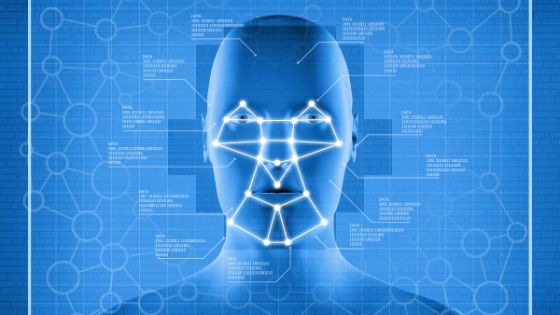Even in this day and age, there are some companies that still operate on documentation and manual effort. This is a hindrance in achieving total automation for biometric facial recognition technology. As per research, the financial revenue for the face verification software will be around $13 billion by 2028. The growth is understandable because biometric facial recognition software is on social media platforms and ATMs. Countries like China, the UK, and the USA are setting technological advancement examples.
Their clients do not have to go through lengthy paperwork procedures for identity verification. They just need to show their face and the biometric facial recognition system will authenticate their identity within a few seconds.


Biometric Facial Recognition Technology – What is It?
A biometric facial recognition service instantly verifies the identity of the client. The software scans the facial pattern of the end-user. The machine learning algorithm cross-checks the data to determine its authenticity. Face verification technology frees users from carrying their ID cards all the time. In this way, biometric facial recognition technology is the most efficient and reliable software in the market.
Top Use-cases of Biometric Facial Recognition Technology
Hassle-free Travels
Nowadays, airports are shifting towards biometric facial recognition technology to provide a positive customer experience to their passengers. Another objective behind the implementation of the technology was to minimize the incidences of money laundering, and human and drug trafficking. The document verification technology had a lot of issues which were resulting in poor customer experience. Biometric facial recognition technology has diverse benefits. For instance, it ensures customer safety as well as a pleasant experience. The technology has the backing of artificial neural networks and ML algorithms which make sure that the outcome has high accuracy.
Clients might be worried about the cost of the technology but it is actually resource-efficient. It saves resources that were previously used to rectify the mistakes in the outcomes. An example of the application of biometric facial recognition technology is Hartfield-Jackson International Airport. The airport actually has face verification technology at several checkpoints to ensure high-security levels. This is the future projection for the travel industry.
The Application of Face Detection Systems in the Business Sector
To maintain their competitive edge in the market and secure their customer base, business experts want to design a pleasant client experience for their customers.
The leading examples in this context are blockchain, RegTech, and e-commerce.
Such industries opt for the latest technologies because they deal in rapidly advancing products and services. For instance, the identity verification sector employs CDD and diverse identity authentication procedures. They all have the latest biometric facial recognition technology to elevate security during their customer onboarding process. Similarly, Fintech and Blockchain sectors are using face verification technology to onboard their remote clients with upgraded security.
More examples include Google, and Facebook as they are using their own biometric facial recognition technology. These days, mobile phones also have face verification services for unlocking the device and other purposes.
Face Scanning in the Law Enforcement Agencies
Law enforcement agencies always look for ways to close the gaps in their security systems. They want to reduce criminal behaviour as much as possible. The FBI agency uses biometric facial recognition technology to detect suspects. The evidence from the face verification software can be used to start an investigation against the perpetrator.
Moreover, the police personnel uses the technology to find crime suspects in CCTV footage. But this raises an issue of individual privacy because the public data will no longer be private.
Biometric Facial Recognition Technology: What are the Obstacles to Total Automation?
The cost to implement the technology can be a real hurdle in the total automation of the AI. the other major issue is the privacy of public data. Social activists are really vocal about this loophole in biometric facial recognition technology. In this context, the global regulatory bodies have put restrictions on the use of public data and some USA states have even put a complete ban on its use e.g. San Diego.
One way to ensure total automation is that all the stakeholders use the data with sensitivity and care. The GDPR and CCPA were put in place to regulate the use of public data by the private industries.
Summing Up
To sum up, the corporate world is able to onboard its remote clients due to the implementation of biometric face identification online. It has paved the way for business expansion across the globe. The online face verification technology ensures a safe login procedure for the end-users. Biometric facial recognition technology can play a critical part in the long-term growth of a company. The staff members only need to be careful regarding the privacy concerns of their clients.
























